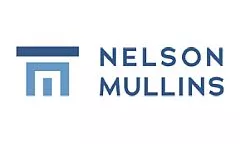The One Big Beautiful Bill Act (OBBBA) made the following changes to qualified small business stock (QSBS):
- The holding period is now graduated for stock acquired after July 4, 2025.
- The exclusion amount is increased from $10 million to $15 million with a yearly inflation-based adjustment.
- The limit on “aggregate gross assets” has been increased from $50 million to $75 million.
Prior to the enactment of the OBBBA, QSBS had a holding period of at least five years before the taxpayer could exclude gain on the disposition of such QSBS. The OBBBA changes this regime from an “all or nothing” holding requirement to a graduated scale:
- QSBS held for at least 3 years will be eligible for 50% exclusion of taxable gain;
- QSBS held for at least 4 years will be eligible for 75% exclusion of taxable gain; and
- QSBS held for at least 5 years will be eligible for 100% exclusion of taxable gain.
By loosening the restrictions on QSBS, the changes are aimed at incentivizing investment. Accordingly, the new rules add three key benefits for investors:
First, these changes allow owners of expanding businesses to take advantage of single-level pass-through taxation for a longer period before converting to a C corporation (and thereby subjecting the company to two levels of tax). If a business is generating losses early in its lifecycle, keeping the entity as a limited liability company taxed as a partnership allows these losses to directly pass through to holders of the interests and offset other income, thereby reducing tax liability for the owners.
Second, businesses can continue operating as an entity taxed as a partnership for longer before converting to a C corporation without triggering the aggregate gross assets limitation since it has been increased to $75 million. Many methods of converting from operating as a pass-through entity to a C corporation involve a contribution of property, which results in the aggregate gross assets limitation being tested using the fair market value of the property rather than its adjusted basis (the default rule). The increased threshold means that owners can wait longer to convert to a C corporation, which gives more time for the basis of their interests to be increased—potentially allowing the owners to benefit from the fact that the QSBS exclusion allows for the greater of $15 million or 10 times the shareholder's basis to be excluded.
Finally, the changes allow for investors to still benefit from the exclusion even if the “right” exit opportunity comes prior to the 5-year holding period being met. Now, a benefit can still be had even if the stock is only held for a 3- or 4-year period.
The content of this article is intended to provide a general guide to the subject matter. Specialist advice should be sought about your specific circumstances.







